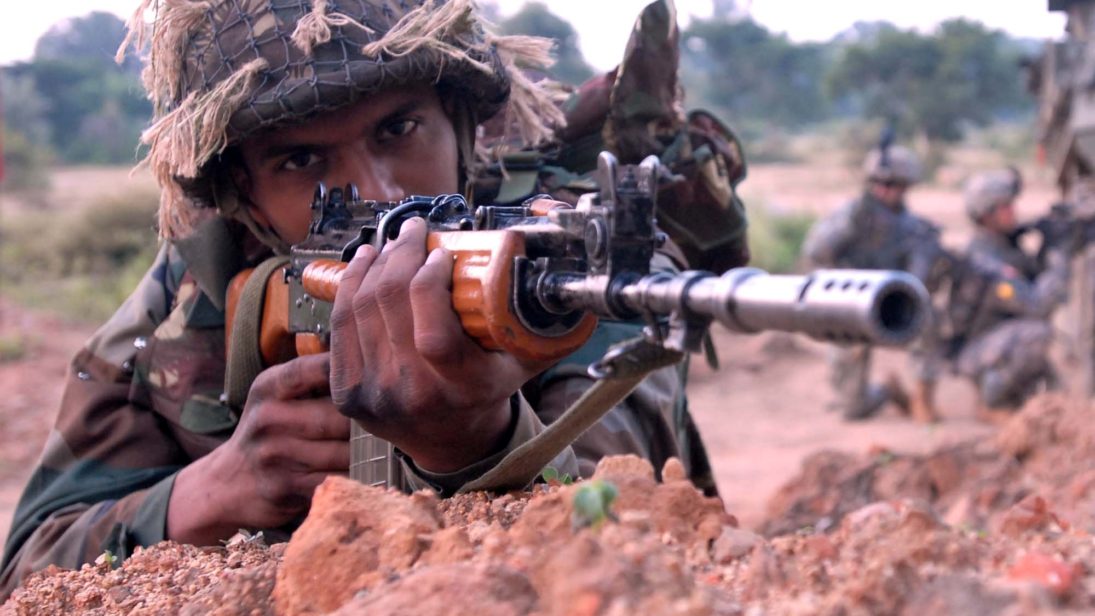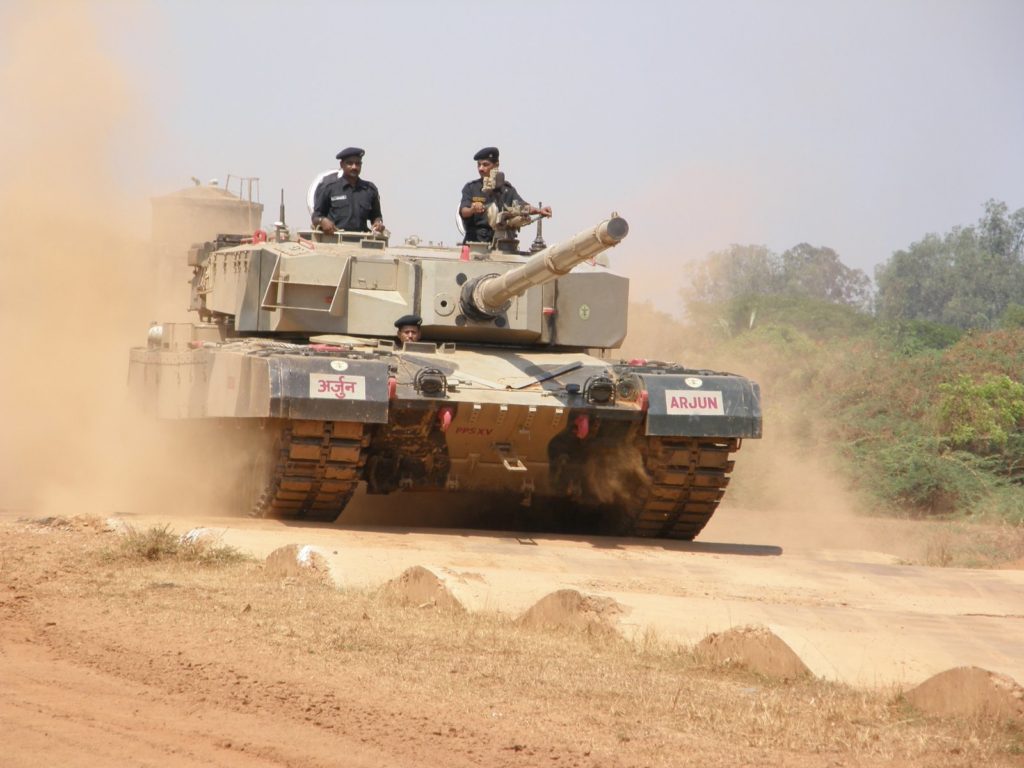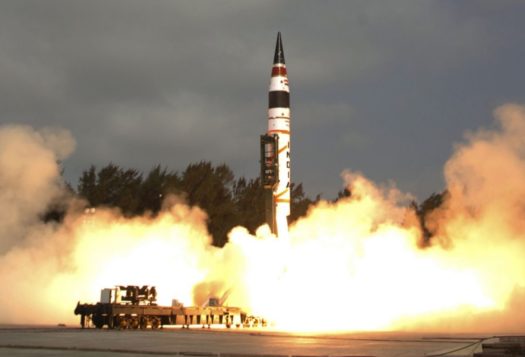
In March 2018, the journal India Review published a special issue on the theme of the Indian strategy and its various elements. Christopher Clary, a perspicacious expert on the Indian military affairs, explains the transformation in the Indian Army’s doctrines of warfare in his article “Personalities, Organizations, and Doctrines in the Indian Military.” This article is a valuable addition to the literature on Indian military doctrines, advancing three major arguments. First, it validates some of the core assumptions of organizational theories of strategic studies. Second, it identifies major sources of the doctrinal formulation in the Indian military. Third, the author explores how a lack of effective civilian control provides avenues for military leaders to design doctrines to serve organizational proclivities.
The relevance of the article is evident due to unsettled debates on the state of the various Indian military doctrines in the recent past. More recently, Maj. Gen P. K. Mullick (Retd.) has rightly asserted that doctrinal delusion is a subject of major concern for the Indian Army in particular and the Indian military in general. Clary’s essay provides a chronological explanation of these debates. It reveals that “all is not well” within the world’s second largest army – the Indian Army.
Key Determinants of Doctrinal Change
Clary outlines the evolution of the Indian Army doctrines in five phases and describes the specific characteristics of each: from 1947 to the 1962 war (defense-in-depth without mechanized forces); in the aftermath of the 1962 war to the 1971 war (“defense supplemented by counterattack”); from 1971 to the Indian Army’s engagement in the counterinsurgency operations through the late 1980s (maneuver warfare with the induction of more mechanized units); from acceptance of the counterinsurgency roles to India’s limited war with Pakistan in 1999 (sub-conventional light infantry-based counterinsurgency missions with conventional mechanized warfare); and from the Kargil War to the present era (limited war under the nuclear shadow, or Cold Start).
Clary emphasizes at the outset that the unique nature of India’s civil-military interface has been a key determinant of doctrinal change in the Indian Army since 1947. He explains how an imbalanced civil-military interface favors the aspirations of army leaders to enjoy maximum autonomy with minimum uncertainty through subtle and steady progress towards offensive doctrines. The passivity of the Indian political class towards military matters has been growing ever since 1962, which has made the military leaders eager to gain organizational autonomy and exploit parochial interests. As a result, operational and doctrinal decision-making has remained with the military leaders while the civilian leaders control the armed forces through budgetary constraints, promotions, and appointments at the higher echelons. This structural lacuna provides extensive autonomy to the military organizations to deliberate on doctrinal questions in the absence of adequate political guidance.
Clary’s analysis suggests that the Indian civilian and military leaders have a mutual interest not to interfere in each other’s sphere beyond a minimal level. The consequences of this have included the stymieing of military innovations and the slow doctrinal move towards offensiveness.
To substantiate this line of argument, Clary sheds light on existing fault lines in the selection process of the Chief of Army Staff (COAS) and its subordinates. More specifically, the article identifies how the existing system provides undue leverage to the top military leaders for partiality in promotions and higher appointments of junior officers. Another critical factor to India’s doctrinal change is the relatively shorter tenure of the COAS that makes them indifferent to doctrinal debates during their term. Thus, the succeeding military leaders would halt or speed up the momentum of the doctrinal change remains solely a personality-driven endeavor. As Clary puts it, “nothing in the public record suggests it is either easy or common for Army chiefs to select successors based on a commitment to doctrinal reform.”
In sum, Clary’s analysis suggests that the Indian civilian and military leaders have a mutual interest not to interfere in each other’s sphere beyond a minimal level. The consequences of this have included the stymieing of military innovations and the slow doctrinal move towards offensiveness.

The Scopeand Limitations
Theoretically, Clary uses path-breaking studies on military doctrines and military innovations to explain the Indian case. However, the use of “multiple facets of organizational theories” would have made the article more theoretically and empirically challenging. Acclaimed organizational theorists W. Richard Scott and Gerald F. Davis have viewed organizations as rational, natural, or open systems. They assert that these systems provide three competing definitions of an organization as well as three different logics for organizational behavior. It diversifies the theoretical base of organizational theory: a rational perspective is limited to study of formalized structures/functions; a natural perspective analyzes behavioral trajectory; and an open perspective investigates how organization engages in the creation of myths and self-serving glory to reinforce its importance. But Clary does not categorize the Indian Army as an organization with reference to these analytical models. Thus, it is a case of “simplistic hypothesis testing” rather than “identifying the microfoundations and multiple causal logics” within organizational theory. This limits the scope and explanatory power of his application of the theory.
Anexploration of the Indian Army as a rational and open form of organizationwould have provided more refreshing insights. For instance, viewing doctrinaldevelopment in the Indian Army from an open system perspective illustrates howdoctrines are being used as tools to reinforce the prevailing culture of thearmy. Moreover, the open system perspective aptly rationalizes the Indian Army’sdecision to embrace the Cold Start doctrine, as it upheld the army’s relevancein the nuclear milieu, and mobilizes public support in favor of theorganization’s demands. In other words, this perspective helps to understand howthe mere pronouncement of offensive doctrines reinforces importance of army inthe psyche of citizens and diverts public debate on the ills within theorganization.
The use ofthe term “the Indian military” in the title of the article is overly ambitious,if not misleading. It implies that the article delves into the doctrinalchanges in all three services of the Indian military. However, the author hashardly referred to the doctrinal development in the other two services, namelythe Indian Navy and the Indian Air Force (IAF). A comparative analysis of thedoctrinal development in the three services would have given a morecomprehensive picture of the “personalities, organizations, and doctrine in theIndian Military.” A reading of the declassified army doctrines, air doctrines,and maritime doctrines of the Indian military shows glaring differences overnature of warfare strategies and strategic objectives. Even India’s first-everdeclassified JointDoctrine fails to provide a unified military perspective.Therefore, an analysis of the transformation in the army doctrines injuxtaposition with the doctrinal development in the other two services and ajoint doctrine would have appropriated the title and expanded the empiricalbase to test his theory.
Future Research
These trends suggest that the increasing offensive content in army doctrines has remained limited to organizational proclivities. The service-specific offensive doctrines have led to an overestimation of organizational capabilities, missions, and roles. This in turn, serves parochialism and media-fanned hyper-nationalists.
Nonetheless,Clary’s article sets an agenda for future research, including several puzzlingquestions in the South Asian context. For instance, has doctrinal developmentin Pakistan’s Army adhered to the prescriptions of the organizational theory?Have the wars between India and Pakistan since 1947 been an outcome ofoffensive strategies of the respective armies as predicted by theorganizational theories? The correctness of the assumptions of organizationaltheories in South Asia remain under-examined.
Another key question that needs further scrutiny is: to what extent does the evolution of the Indian military doctrines actually drive reforms, transformation, and restructuring of Indian armed forces leading to behavioral changes? Clary’s study explains a slow offensive doctrinal development, but does not evaluate how these doctrinal precepts are being internalized and institutionalized in the Indian Army. Offensive military doctrines demand optimally structured armed forces with joint institutions. However, some of the evidence suggests that the Indian Army’s move towards offensiveness remains aspirational and ephemeral. For instance, the Indian Army doctrine of 2004, which implanted the idea of Cold Start, aimed to “have a well-equipped and optimally structured army.” But, in March 2018, the Parliamentary Committee on Defence (2017-18) reported that 68% of the Indian Army’s weapons are in “vintage” condition. Moreover, while the Cold Start requires a robust level of jointness, the level of jointness remains weak in the Indian armed forces.
These trends suggest that the increasing offensive content in army doctrines has remained limited to organizational proclivities. The service-specific offensive doctrines have led to an overestimation of organizational capabilities, missions, and roles. This in turn, serves parochialism and media-fanned hyper-nationalists. As Happymon Jacob’s recent book Line on Fire: Ceasefire Violations and India-Pakistan Escalation Dynamics underscores, offensive posturing can lead to increased Ceasefire Violations (CFVs) on the Line of Control (LoC) and increased chances of nuclear war between India and Pakistan. Therefore, this article establishes an important backdrop upon which one can further investigate the causes of offensive strategies and doctrine in both India and Pakistan, perhaps saving the region from becoming a nuclear wasteland.
Editor’s Note: In an ongoing series aimed at bridging the divide between policy analysis and academic scholarship, SAV contributors review recent articles and books published by leading scholars to evaluate the latest theoretical and analytical debates on strategic issues and their implications for South Asia. Read the series here.
***
Image 1: Wikimedia Commons
Image 2: Wikimedia Commons


